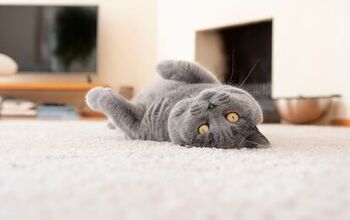What Are the Signs of Dental Disease in Cats?

What would you do if someone told you there is a hidden issue silently affecting the comfort and well-being of many beloved kitties, something we might not even notice until it becomes a significant (and painful) problem?
That hidden issue is feline dental disease.
Dental problems are incredibly common, affecting a surprisingly high number of cats. Studies have found that between 50 and 90% of cats over the age of four are currently living with some form of dental disease, but it often goes unnoticed because our feline friends are masters of hiding pain.
This guide will help you learn to recognize even the most subtle warning signs that your cat may be dealing with dental problems, the most common types of dental disease in cats, and how to prioritize dental care to prevent a problem before it develops.
Understanding Dental Problems in Cats
It’s easy to assume that if your cat is acting normally, their mouth is fine. But the reality is that dental disease is a progressive struggle that often starts small and silently gets worse over time.
It begins when bacteria in your cat’s mouth mix with food particles and saliva to form plaque – a soft, sticky film that coats their teeth. If that plaque isn’t removed, it hardens into tartar. Once tartar forms, it creates a rough surface that allows even more plaque to accumulate, laying the foundation for more serious issues to develop.
While that summarizes the basics, dental disease isn’t a single problem. Instead, as the plaque and tartar continue to get worse, it can develop into a spectrum of conditions. Understanding these different conditions is the first step toward recognizing that your cat might be suffering and taking the necessary steps to help them feel better.
Gingivitis
This is the earliest stage of dental disease, characterized by inflammation of the gums. It’s primarily caused by the accumulation of plaque and bacteria along the gum line. You may notice your cat’s gums appearing red, swollen, or even bleeding easily, especially when touched or when your cat eats. You may also see small amounts of blood on your cat’s favourite chew toys.
The good news is that gingivitis is often reversible with professional veterinary dental cleaning and consistent at-home dental care. The key to success is catching it early!
Periodontal Disease
If gingivitis is left untreated, it can progress to periodontal disease. This is a much more serious condition that affects not just the gums but also the deeper structures that support the tooth, such as the bone and ligaments that hold the tooth in its socket. The bacteria and inflammation start to destroy these supporting structures, leading to the formation of “pockets” under the gumline where bacteria can accumulate.
The damage caused by periodontal disease ultimately leads to bone loss, receding gums, and eventually, painful tooth loss. Unlike gingivitis, advanced periodontal disease is often irreversible, although its progression can be managed to avoid further complications. Your vet can also help with pain management to keep your cat comfortable.
Tooth Resorption
If you haven’t heard of this before, you’re not alone. This incredibly common and often very painful condition is unique to cats and one that many cat parents are unfamiliar with. It occurs when cells called odontoclasts, which are typically involved in tooth development, begin to erode and destroy the tooth's structure. This condition often begins inside the tooth or below the gum line.
Because the lesions often start below the gum line, they can be difficult to spot without X-rays. However, affected cats may show signs of pain when eating (suddenly dropping food, chattering their jaws, reluctance to chew on one side), drooling, or increased sensitivity when the mouth is touched.
Stomatitis
This is a severe, widespread, and extremely painful inflammation of the entire mouth, not just the gums around the teeth. It can affect the gums, tongue, cheeks, and the back of the throat. Stomatitis is often an immune-mediated condition caused by the cat’s immune system overreacting to the bacteria and plaque in their mouth.
Cats with stomatitis are in severe pain, massively impacting their quality of life. They are often uninterested in or unable to eat, excessively drooling, and may have very bad breath. Managing stomatitis can be challenging and usually requires aggressive treatment. In many cases, it will require full-month tooth extractions to relieve the pain and inflammation.
Fractured Teeth
Just like humans, cats can fracture their teeth. This can happen from chewing on hard objects (like certain toys) or from trauma, such as a big fall. A previous cat of my own suffered a fractured tooth after slipping off a bookshelf she was trying to climb.
When a tooth is fractured, it can expose the sensitive inner portion, which contains nerves and blood vessels. This is incredibly painful and also creates an open pathway for bacteria to enter, leading to infections and the formation of abscesses. For this reason, fractured teeth require immediate vet attention to both prevent infection and address your cat’s pain.
Warning Signs of Dental Disease
The tricky part about dental disease is the fact that cats are masters of disguise. In the wild, showing any sign of weakness (like pain or illness) could make them vulnerable to predators. Despite their shift into life as a pampered housecat, the instinct to hide their pain remains strong. Often, they will suffer in silence, and by the time we notice something is wrong, the condition has progressed to more advanced stages.
This is why it’s so crucial for us to be in tune with our cats and aware of even the most subtle changes. Don’t wait for your cat to scream in pain.
Behavioral Changes (Often Subtle)
These are the most common red flags, but they require a keen eye and understanding of your cat’s everyday habits. After all, no one knows your cat better than you.
You might first notice changes in their eating habits. Your cat might start chewing more slowly, dropping pieces of food, or tilting their head to one side while chewing to avoid a painful area. If your cat suddenly seems picky about their dry food or treats, but eagerly digs into their wet food, it could be a sign that chewing hard kibble is simply too painful. Even a slight change in appetite or less enthusiasm at mealtimes should warrant investigation.
Changes in grooming are another subtle sign. If your cat is experiencing pain from dental problems, self-grooming may be uncomfortable, painful, or impossible. You may notice that your cat has developed matted fur, their coat appears unkempt, or there are bits of food remaining around their mouth after a meal.
A previously social cat might start hiding more often or avoid interacting with other pets or people in the home. If your cat normally enjoys head scratches but suddenly flinches or reacts negatively when you even lightly touch their mouth or face, it’s a strong sign that they’re in pain. A general lack of energy or disinterest in play, especially their favorite games, could also be a sign that something’s wrong.
Watch out for excessive drooling. While some cats might drool when happy, persistent or excessive drooling, especially if it’s thick, discolored, or contains streaks of blood, is a major warning sign. This can be a sign of pain, nausea, or difficulty swallowing comfortably.
Finally, you may notice your cat pawing at their mouth or face. They might bat at their mouth with a paw, rub their face on furniture or the floor, or repeatedly yawn or make chewing motions. These are all attempts to alleviate the pain and discomfort they are experiencing. This is a clear sign that something is bothering them.
Visible Clues in Your Cat’s Mouth
While many cats won’t allow you to inspect their mouth at home, it’s a valuable tool for those who are calm and cooperative. A quick look can sometimes reveal concrete direct evidence. That said, always proceed with caution and never force your cat. If they are showing signs of pain, discomfort, or aggression, stop immediately. Even the calmest cat may bite if they are in pain.
One of the most common and earliest signs of dental problems is bad breath. This goes beyond the standard “cat breath.” An overly strong, foul smell is a dental disease red flag, caused by odor-producing bacteria in their mouth.
If your cat allows you to, carefully lift their lips to examine their gums. Healthy cat gums are pale pink. If they appear bright red, swollen, or purple, or if they bleed easily when very gently touched, it’s a sign that they are dealing with inflammation (gingivitis or more advanced periodontal disease.
Look for tartar buildup on the surface of the teeth, especially the canines and molars (back teeth). If you spot a yellow, brown, or even green discoloration, this is hardened plaque, which tells you that a professional cleaning is needed. This is also the perfect time to look for any missing or broken teeth, gaps where a tooth should be, teeth that appear chipped or fractured, or any dark spots on the teeth. While you should never try to wiggle your cat’s teeth, if you happen to notice a tooth that seems unusually loose when your cat is eating or yawning, it should be addressed immediately.
Lastly, any visible ulcers or lesions in the mouth, such as sores, red spots, or abnormal growths on the gums, tongue, or inner cheeks, are concerning and warrant a vet visit.
When to See the Vet
If you notice any of the signs I’ve shared or suspect something may be “off,” the next step is to schedule an appointment with your veterinarian. It’s easy to second-guess ourselves, thinking “maybe it’s nothing,” but when it comes to dental pain, it’s better to be safe than sorry. Acting quickly can make all the difference in your cat’s health and comfort.
What you see on the surface of your cat’s teeth is often just the tip of the iceberg. The most serious dental issues, like advanced periodontal disease and tooth resorption, are usually hidden below the gum line. This is where bone loss occurs and where the roots of the teeth can be severely affected.
Because these problems hide out of sight, A thorough diagnosis will require more than just a quick look. Your vet will do a basic exam, but in most cases of dental disease, a professional dental cleaning and exam under anesthesia is necessary. Not only will this allow your vet to clean away plaque and tartar, but it also allows them to thoroughly examine every tooth, probe the gums to find pockets of bacteria, take full-mouth X-rays (which will reveal problems invisible to the naked eye), and do any necessary extractions without causing your cat pain or stress.
Some signs warrant a more urgent visit to the vet (or nearest emergency clinic), such as:
- Sudden and complete refusal to eat: This isn’t referring to a picky eater. If your cat, who normally loves food, suddenly refuses to eat anything at all, it’s a serious sign of severe pain or illness.
- Excessive drooling with visible blood: A little drool is normal. However, consistent drooling with noticeable streaks or clots of blood points to a significant injury or infection.
- Facial swelling: Any noticeable swelling on your cat’s face, especially under their eyes or on their jaw, could indicate a severe tooth root abscess or infection that needs immediate attention.
- Obvious pain when opening their mouth or eating: If your cat cries out, flinches significantly, or is clearly in pain when attempting to eat or yawn, they are in severe pain.
- Any rapid behavior change that concerns you: Trust your instincts. If something just doesn’t seem right with your cat, it’s always best to err on the side of caution.
How to Protect Your Cat from Dental Disease
Prevention is the most powerful tool you have when it comes to your cat’s dental health. While there is no way to guarantee your cat will never experience issues, there are steps you can take to significantly reduce their risk.
The best thing you can do for your cat is to make home dental care part of your routine. The most effective method is toothbrushing, using a feline-specific toothpaste and a soft brush or finger brush. Ideally, this should be done daily or every other day, focusing on the outside surfaces of the teeth.
If your cat is uncomfortable with the toothbrush (most are, unless they were introduced to it early), there are other products you can use to help improve their oral health. Dental diets with the VOHC (Veterinary Oral Health Council) accepted label are designed to reduce plaque and tartar.
There are also VOHC-accepted treats and chews that are made with products to help clean their teeth, as well as to harness the power of chewing to scrape their teeth clean. Of course, like any treat, these should only be given in moderation.
Finally, there are water additives that help to reduce the amount of bacteria in your cat’s mouth when they are added to their water dish. They are less effective than brushing, but they are better than nothing.
Of course, the most crucial step you can take is to keep up with your cat’s annual wellness exams, giving your vet the best chance of identifying any issues early. They will also be able to make recommendations based on the current condition of your cat’s teeth, including letting you know when you should schedule an appointment for a complete professional cleaning.
Join the PetGuide community. Get the latest pet news and product recommendations by subscribing to our newsletter here.

Britt Kascjak is a proud pet mom, sharing her heart (and her home) with her “pack” which includes her husband John, their 2 dogs – Lucifer and Willow – and their 3 cats – Pippen, Jinx, and Theia. She has been active in the animal rescue community for over 15 years, volunteering, fostering and advocating for organizations across Canada and the US. In her free time, she enjoys traveling around the country camping, hiking, and canoeing with her pets.
More by Britt























